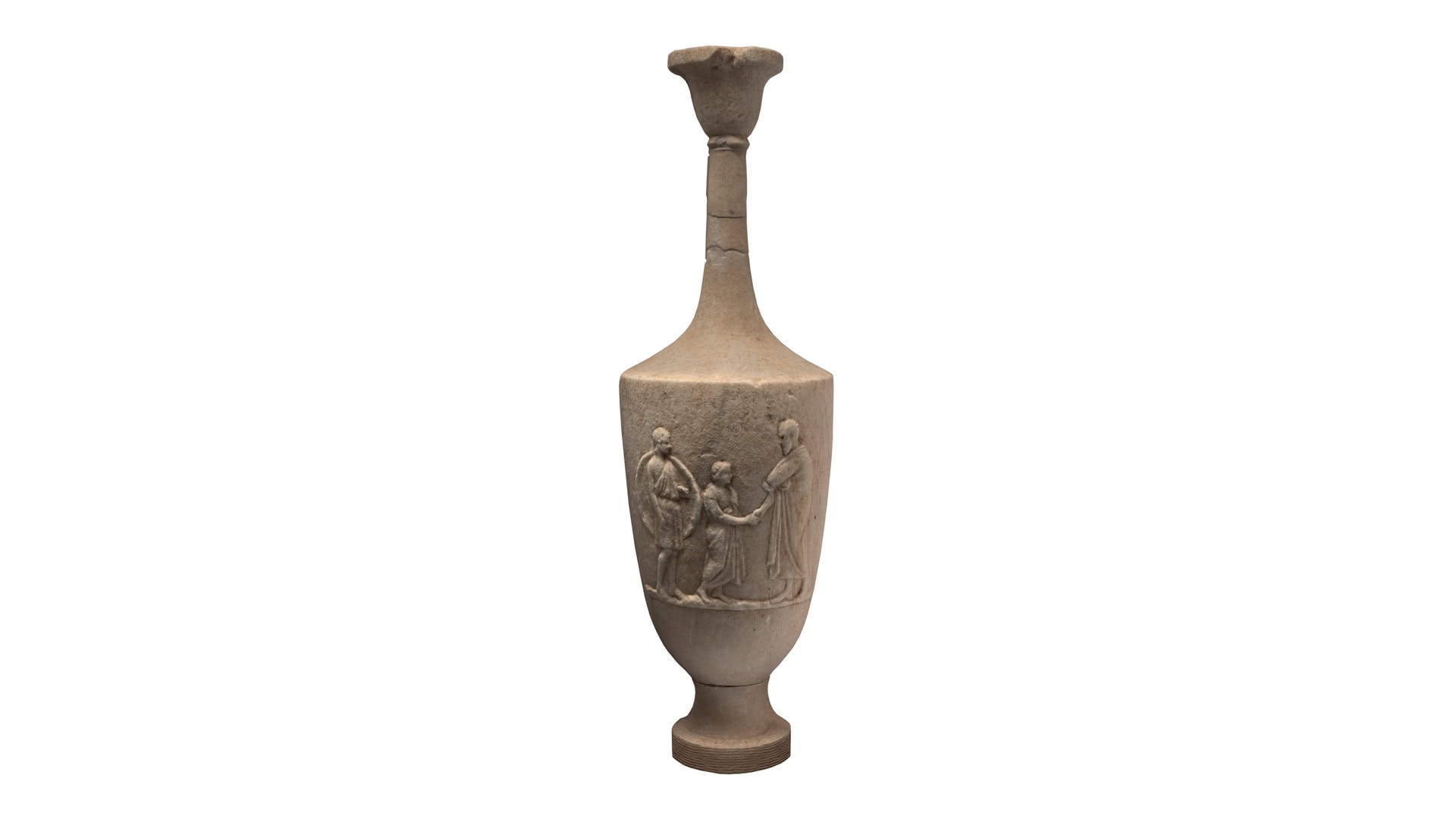Marble funerary lekythos with a farewell scene

The section concludes with a marble funerary lekythos of the 4th century BC, which bears on its surface a touching scene of dexiosis (farewell of the deceased).
Three standing male figures, depicted at the moment of the last farewell, are illustrated on the main side of the vase. On the right, a mature, bearded man extends his right hand and greets with a handshake (dexiosis) a young boy, beardless and short compared to the others, standing in the centre of the scene. On the left, behind the boy, the figure of a warrior appears, holding a shield and wearing a helmet.
On the Attic funerary monuments of antiquity, the scenes of dexiosis (farewell scenes) included the figure of the deceased bidding farewell to a relative with a handshake. According to one interpretation, on this particular lekythos, the deceased is identified with the mature man on the right, to whom the funerary monument the lekythos decorated was dedicated. The other two figures bid him farewell and look at him from a distance, as if recognizing him as the central figure of the scene. According to this view, the bearded man can be identified with the father who bids farewell to his sons before travelling to the afterlife. According to another interpretation, the dead man should be associated with the figure of the warrior on the left, who attends the greeting of his son and his father, thus linking the different generations of the family he is leaving.
The farewell scenes were very popular in Athens in the late 5th century BC onwards, at a time when the laws for acquiring the status of Athenian citizen were tightened, as only those with an Athenian father and Athenian mother could be characterized as citizens. Thus, these farewell scenes emphasized the close relationship and continuity between the generations of a family, highlighting the importance of the blood ties between its members.
In antiquity, the clay lekythoi, which served as the models for the production of the marble ones, were small everyday vases for storing aromatic oils, which were often used for the care of the dead or placed as gifts in tombs. In contrast, marble lekythoi, such as this example, were used as grave markers to mark, decorate or delimit the grave of the deceased, perpetuating their memory over the centuries.
This lekythos is the work of an Attic workshop and is given on a long-term loan by the Paul and Alexandra Canellopoulos Museum to the Museum of Cycladic Art.